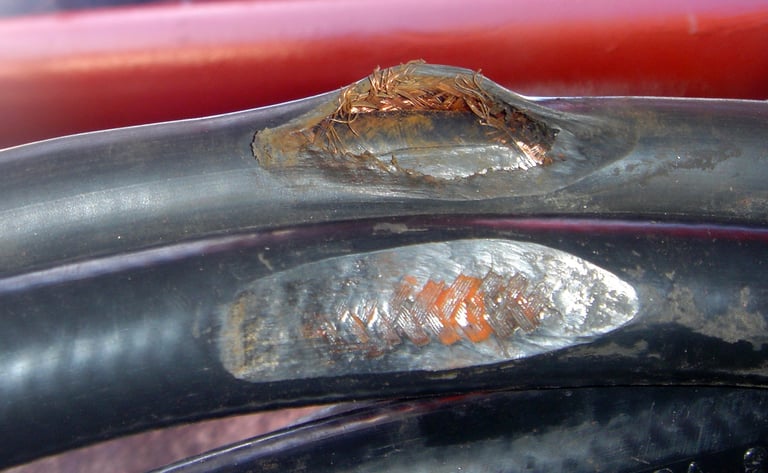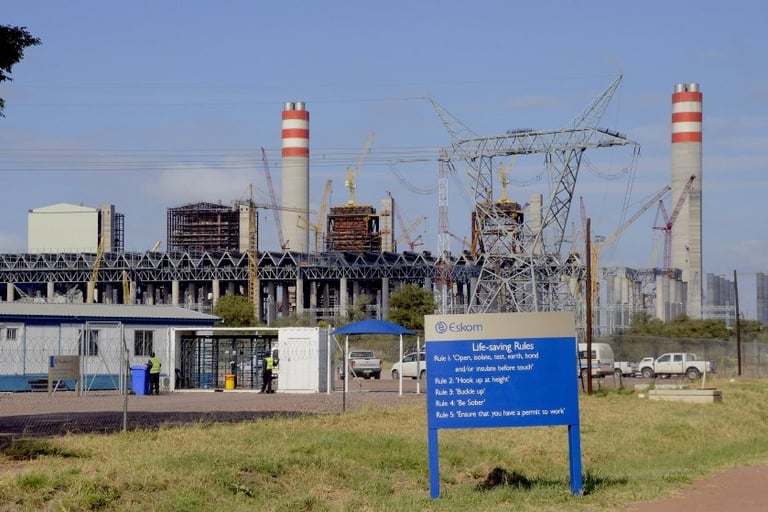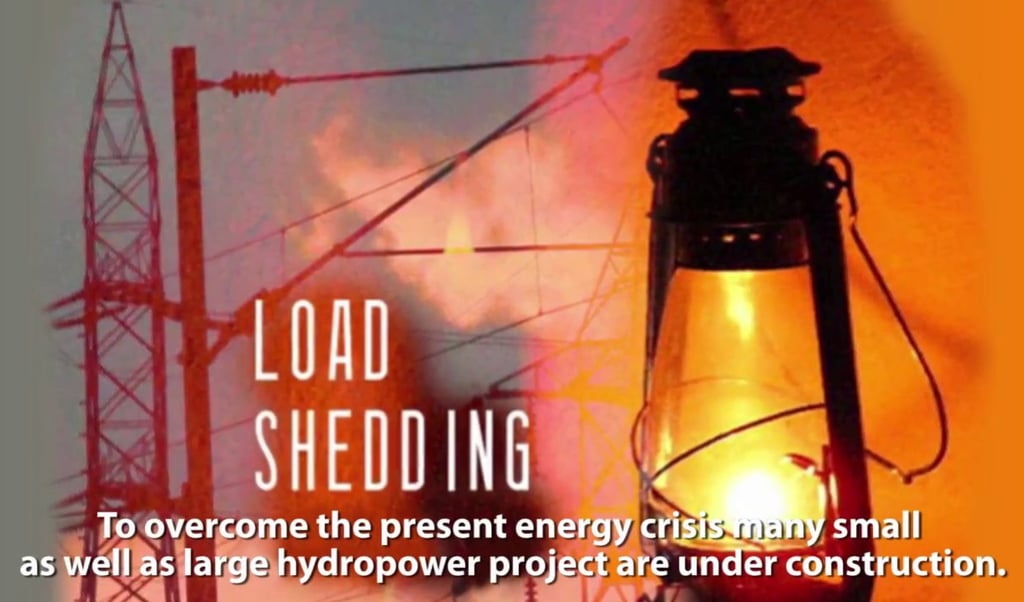Anhui Feichun Special Cable Co.,Ltd Li.wang@feichuncables.com
What Are the Top Mining Cable Failures in South Africa’s Harsh Environments and How Can They Be Prevented?
Explores the top mining cable failures in South African environments, their causes, impacts, and prevention strategies. Drawing on recent incidents, including the 2024-2025 Eskom cable theft crisis and load shedding challenges, we provide a comprehensive guide to understanding and mitigating these issues. The article aims to educate mining professionals, engineers, and stakeholders on practical solutions to enhance reliability and safety in South Africa’s mining sector.
Li.wang@Feichun Cable
7/14/20257 min read


South Africa’s mining industry is a cornerstone of the nation’s economy, contributing approximately 6% to the gross domestic product and employing thousands of workers across gold, platinum group metals (PGM), coal, and other mineral sectors. However, the industry faces significant challenges due to the harsh operating conditions of its deep underground mines, which are among the deepest in the world. Electrical infrastructure, particularly mining cables, is critical to powering heavy machinery, lighting, ventilation, and safety systems. Cable failures in these environments can lead to costly downtime, safety hazards, and operational inefficiencies.
Understanding South Africa’s Mining Environment
Geographic and Geological Challenges
South Africa’s mining operations are renowned for their depth, with some gold mines, such as Mponeng, extending over 4 kilometers underground. These deep mines expose cables to extreme conditions, including:
Extreme Temperature Variations: Underground temperatures can exceed 40°C, while surface temperatures fluctuate widely, stressing cable insulation and conductors.
High Humidity and Moisture Levels: Groundwater ingress and high humidity in underground tunnels accelerate cable degradation.
Corrosive Mineral Environments: Exposure to acidic mine water and mineral dust can corrode cable components, reducing their lifespan.
Operational Challenges
Mining operations demand robust electrical infrastructure to support:
Heavy Machinery and Equipment: High-power equipment like drills, conveyors, and hoists require reliable, high-capacity cables.
Continuous Operation Requirements: Mines often operate 24/7, placing constant stress on electrical systems.
Safety-Critical Systems: Electrical failures can compromise ventilation, lighting, and emergency systems, endangering workers.
Remote Location Maintenance: Many mines are in remote areas, making timely maintenance and repairs challenging.
Top 5 Mining Cable Failures in South African Environments
A. Insulation Breakdown and Electrical Shorts
Causes: Extreme temperatures, high humidity, and chemical exposure degrade cable insulation, leading to electrical shorts. For example, acidic mine water can erode insulation materials like PVC or XLPE.
Symptoms: Power outages, equipment malfunctions, and potential fire hazards due to arcing.
Impact: Production halts can cost mines millions of rands per day, while fire risks threaten worker safety. Equipment damage may require costly replacements.
Prevention:
Select cables with robust insulation, such as ethylene propylene rubber (EPR) or cross-linked polyethylene (XLPE), designed for high temperatures and chemical resistance.
Use environmental protection like conduit systems or waterproof sheathing.
Regular thermographic inspections to detect hot spots.
B. Mechanical Damage from Mining Operations
Causes: Rock falls, contact with heavy equipment, and blasting vibrations can physically damage cables. South Africa’s deep mines are particularly prone to rock falls due to geological stress.
Symptoms: Visible cuts, abrasions, or crushed cables, leading to intermittent power issues or complete failure.
Impact: Immediate power loss disrupts operations, while damaged cables pose electrocution risks. Delays can lead to significant production losses.
Prevention:
Route cables away from high-risk areas like blasting zones.
Install physical protection systems, such as steel conduits or cable trays.
Use armoured cables with steel wire or tape reinforcement for added durability.
C. Environmental Corrosion and Degradation
Causes: Groundwater ingress, chemical exposure (e.g., sulphuric acid from mine water), and dust infiltration corrode conductors and degrade insulation.
Symptoms: Gradual performance decline, increased resistance, or visible corrosion on copper conductors.
Impact: Shortened cable lifespan increases replacement frequency, driving up costs. Corrosion can also cause unexpected failures, compromising safety.
Prevention:
Use corrosion-resistant cables with tinned copper conductors or aluminium alternatives.
Implement environmental controls like dehumidification systems in cable storage areas.
Conduct regular visual and electrical testing to identify early degradation.
D. Cable Theft and Vandalism
Causes: High copper prices, security vulnerabilities, and organized crime syndicates drive cable theft, a rampant issue in South Africa. In 2024-2025, Eskom reported R221 million in losses due to infrastructure theft.
Symptoms: Sudden power loss due to missing cable sections, often in remote or unsecured areas.
Impact: Operational shutdowns, high replacement costs, and increased security expenses. Theft also disrupts critical systems like ventilation, endangering lives.
Prevention:
Use aluminium or composite cables to reduce theft appeal.
Deploy surveillance systems, including CCTV and motion sensors.
Collaborate with law enforcement and mining communities to enhance security.
E. Aging Infrastructure and Maintenance Issues
Causes: Deferred maintenance, outdated systems, and inadequate replacement schedules lead to cable deterioration. Many South African mines operate with legacy infrastructure.
Symptoms: Increasing failure rates, reduced performance, and frequent maintenance needs.
Impact: Cumulative losses from downtime, rising maintenance costs, and safety risks from unreliable systems.
Prevention:
Implement proactive maintenance with predictive tools like insulation resistance testing.
Schedule regular infrastructure upgrades to replace aging cables.
Train maintenance teams on modern cable management practices.
Case Studies: Recent South African Mining Incidents
Case Study 1: Eskom Power Infrastructure Theft Crisis (2024-2025)
Background: In 2024-2025, Eskom reported R221 million in losses due to cable theft and vandalism, affecting mining operations nationwide. Copper cables, critical for power distribution, were prime targets.
Cable Impact: Stolen cables disrupted power to mines, causing unplanned outages and production losses. For example, a platinum mine in Rustenburg lost several days of output due to stolen feeder cables.
Lessons Learned: Mines must enhance physical security and explore theft-resistant materials like aluminium or fibre-reinforced cables.
Industry Response: The Minerals Council South Africa launched collaborative initiatives with Eskom and law enforcement to deploy anti-theft technologies and increase patrols.
Case Study 2: Load Shedding Impact on Mining Operations (2024)
Background: Load shedding in 2024 resulted in a 12% loss of production time for South African mines, as frequent power interruptions stressed electrical systems.
Cable Implications: Rapid power cycling caused thermal and mechanical stress, accelerating insulation breakdown and conductor fatigue in aging cables.
Technical Analysis: Power instability increased voltage spikes, damaging cable insulation and causing shorts. Mines with outdated cables were particularly vulnerable.
Solutions: Mines invested in backup power systems like diesel generators and upgraded to cables with higher surge protection ratings to withstand load shedding.
Case Study 3: Illegal Mining Cable Theft at Abandoned Mines (2025)
Background: In 2025, illegal mining at the abandoned Stilfontein gold mine highlighted the theft of electrical infrastructure, including cables, to power illicit operations.
Cable Security: Thieves stripped copper cables, leaving hazardous, improvised electrical setups that posed fire and electrocution risks.
Safety Concerns: Illegal miners’ unsafe wiring practices endangered lives and complicated site reclamation efforts.
Prevention Strategies: Enhanced site security, including fencing and patrols, and the removal of valuable infrastructure from abandoned mines to deter theft.
Case Study 4: Copper Cable Theft Economic Impact Analysis
Background: Copper cable theft has an estimated R200 billion annual economic impact in South Africa, with mining operations heavily affected due to their reliance on extensive cabling.
Mining Sector: Mines face frequent disruptions, with replacement costs and downtime exacerbating financial strain. For instance, a coal mine in Mpumalanga reported R10 million in losses from a single theft incident.
Technical Consequences: Replacing stolen cables is time-consuming, and temporary repairs often compromise reliability.
Industry Collaboration: Mining companies, Eskom, and the government are piloting theft-resistant cables and smart monitoring systems to combat organized crime.
Technical Solutions and Prevention Strategies
Cable Design and Material Selection
Mining-Specific Cables: Use cables designed to SANS 1520 standards, with EPR insulation and steel wire armour for durability in harsh conditions.
Environmental Resistance: Select cables with UV-resistant, waterproof, and chemical-resistant sheathing.
Theft-Resistant Materials: Aluminium or composite conductors reduce theft appeal while maintaining performance.
Cost-Benefit Analysis: Premium cables may cost more upfront but reduce long-term replacement and downtime expenses.
Installation and Protection Systems
Cable Routing: Install cables in secure, elevated trays or underground conduits to minimize exposure to mechanical damage.
Physical Protection: Use steel guards or concrete encasements in high-risk areas.
Environmental Sealing: Apply waterproof seals and corrosion-resistant coatings to cable joints and terminations.
Monitoring Systems: Deploy fibre-optic sensors to detect tampering or stress in real time.
Security Measures
Anti-Theft Technologies: Use cables with embedded RFID tags or non-metallic conductors to deter theft.
Surveillance Systems: Install CCTV, drones, and motion sensors in remote areas.
Security Protocols: Train staff on theft reporting and coordinate with local police.
Industry Collaboration: Join initiatives like the Minerals Council’s anti-theft task force to share resources and intelligence.
Maintenance and Inspection Programs
Predictive Maintenance: Use infrared thermography and partial discharge testing to identify weak points.
Regular Inspections: Schedule quarterly visual and electrical tests to detect corrosion or wear.
Performance Monitoring: Implement IoT-based systems to track cable health in real time.
Replacement Planning: Budget for phased cable replacements to avoid widespread failures.
Regulatory and Safety Considerations
South African Mining Regulations
Electrical Safety Standards: The Mine Health and Safety Act (MHSA) mandates compliance with SANS 10142 for electrical installations.
Cable Installation Requirements: Cables must be installed to withstand environmental stresses and meet fire-resistance standards.
Inspection Mandates: Regular audits by the Department of Mineral Resources and Energy (DMRE) ensure compliance.
Enforcement: Non-compliance can result in fines or operational shutdowns, emphasizing the need for robust systems.
International Best Practices
Global Standards: Adopt IEC 60502 for mining cable specifications, ensuring compatibility with global best practices.
Lessons from Harsh Environments: Australia’s mining sector uses advanced monitoring to reduce failures, a model South Africa could emulate.
Technology Transfer: Import smart cable technologies from countries like Canada, where remote monitoring is widespread.
Continuous Improvement: Regularly update standards based on global innovations and local feedback.
Economic Impact and Cost Analysis
Direct Costs
Cable Replacement: Replacing stolen or damaged cables can cost R500,000 to R5 million per incident, depending on length and type.
Labor and Installation: Skilled technicians and downtime add R100,000–R500,000 per repair.
Emergency Repairs: Unplanned fixes are 30–50% more expensive than scheduled maintenance.
Security Investments: CCTV and patrols cost R1–2 million annually for large mines.
Indirect Costs
Production Losses: Downtime from cable failures can cost R1–10 million per day for large operations.
Safety Incidents: Electrical accidents increase insurance premiums and legal liabilities.
Insurance Issues: Insurers may raise rates for mines with frequent theft or failures.
Long-Term Impacts: Reduced investor confidence and operational inefficiencies hinder growth.
Future Trends and Innovations
Technology Developments
Smart Cable Monitoring: IoT sensors can detect faults in real time, reducing downtime.
Advanced Materials: Graphene-based conductors offer superior durability and theft resistance.
Predictive Maintenance: AI-driven analytics predict failures before they occur.
IoT Integration: Connect cables to mine-wide networks for centralized monitoring.
Industry Evolution
Sustainable Practices: Use recyclable materials to align with ESG goals.
Automation: Remote-operated equipment reduces cable exposure to mechanical damage.
Energy Efficiency: Low-resistance cables reduce power losses, supporting sustainability.
Collaborative Security: Industry-wide initiatives to combat theft, like those led by the Minerals Council, are gaining traction.
Frequently Asked Questions (FAQ)
What causes mining cable failures in South Africa?
Failures stem from extreme temperatures, humidity, mechanical damage, corrosion, theft, and aging infrastructure.How can mines prevent cable theft?
Use aluminium cables, deploy surveillance, and collaborate with law enforcement.What are the best cables for harsh mining environments?
Armoured cables with EPR or XLPE insulation and corrosion-resistant conductors are ideal.How does load shedding affect mining cables?
Frequent power cycling stresses insulation, leading to breakdowns and shorts.What regulations govern mining cables in South Africa?
The Mine Health and Safety Act and SANS 10142 set standards for safety and installation.
Conclusion
Mining cable failures in South Africa’s harsh environments pose significant challenges, from insulation breakdown and mechanical damage to rampant cable theft and aging infrastructure. Recent incidents, such as the 2024-2025 Eskom theft crisis and load shedding impacts, underscore the urgency of addressing these issues. By adopting robust cable diseños, enhancing security, and implementing proactive maintenance, mines can mitigate risks, reduce costs, and ensure safety. Innovations like smart monitoring and theft-resistant materials offer promising solutions, while industry collaboration and regulatory compliance will drive long-term resilience. South Africa’s mining sector can thrive by investing in reliable electrical infrastructure to power its critical operations.





Email Address: Li.wang@feichuncables.com
© 2025. All rights reserved.


One-click to Quickly Contact
Products
Offshore & Marine Cable
XLPE Cable
Contact
Company
Location:
Building A Private Science and Technology Park, Hefei Economic and Technological Development Zone, Anhui Province, China
